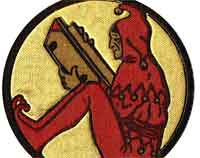Difference Between Ancient and Modern Hebrew

Ancient Hebrew, which is also known as Biblical or classical Hebrew differs very much from the Modern Hebrew. It differs significantly in vocabulary, phonology, grammar and in many other aspects.
Ancient Hebrew was a combination of different dialects, which was used in ancient Israel during the period between 10th century BC and fourth century AD. Modern Hebrew on the other hand has evolved as a common language of the Israeli people. Modern Hebrew is now a secular language of Israel.
Hebrew in ancient times was not spoken as a native language but was widely used in the liturgical contexts. Over the years, a lot of variations came up in the pronunciation and different phonological styles were developed. Sephardic Hebrew and Ashkenazi were the two styles that emerged. The former style was in vogue in the Iberian peninsula and the countries of the former Ottoman empire. The other style was mainly seen in Central/Eastern Europe. Modern Hebrew is mainly based on the Sephardic Hebrew style.
Another thing that can be seen with the Modern Hebrew language is that it has incorporated many neologiosms and loanwords that describe many new words that did not exist during the ancient times.
When looking at the Ancient Hebrew language, tense had no importance and there was no past, present and future. But in Modern Hebrew, there is clear distinction of the three tenses ‘“ past, present and future.
Even in the structure of the sentences, there is significant difference between the Ancient and Modern versions of the Hebrew language. In the ancient Hebrew language, for example, Â a sentence began with a verb whereas in Modern Hebrew, a sentence generally starts with a Subject which is then followed by verb and the object.
Summary
- Ancient Hebrew was a combination of different dialects and was used in ancient Israel during the period between 10th century BC and fourth century AD. Modern Hebrew on the other hand has evolved as a common language of the Israel people.
- Modern Hebrew is mainly based on the Sephardic Hebrew style.
- In the Ancient Hebrew language, tense had no importance and there was no past, present and future. But in Modern Hebrew there is clear distinction of the three tenses ‘“ past, present and future.
- In ancient Hebrew a sentence began with a verb whereas in Modern Hebrew, the sentence starts with a Subject which is generally followed by the verb and the object.
- Difference Between CNBC and Fox Business - October 3, 2011
- Difference Between Distilled Water and Boiled Water - September 30, 2011
- Difference Between McDonalds and Burger King - September 30, 2011
Search DifferenceBetween.net :
 Email This Post
: If you like this article or our site. Please spread the word. Share it with your friends/family.
Email This Post
: If you like this article or our site. Please spread the word. Share it with your friends/family.

